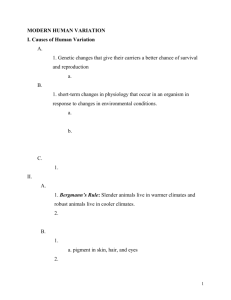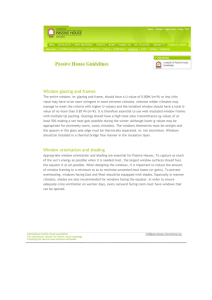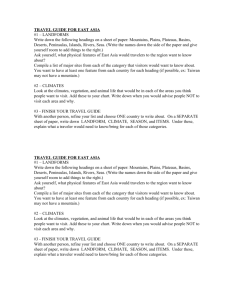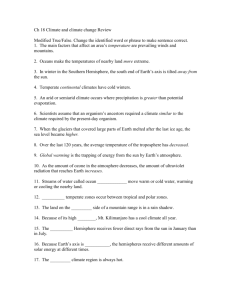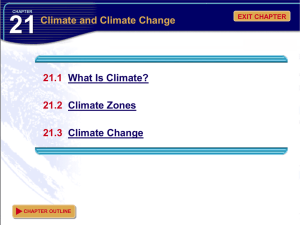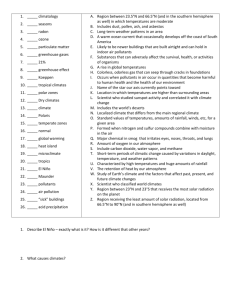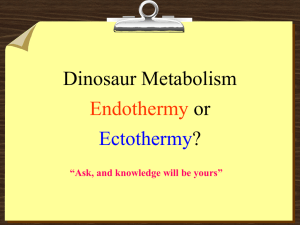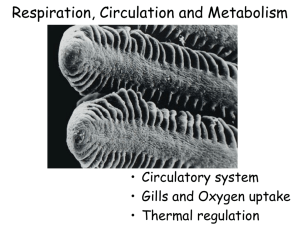Comparative Vertebrate Physiology
advertisement
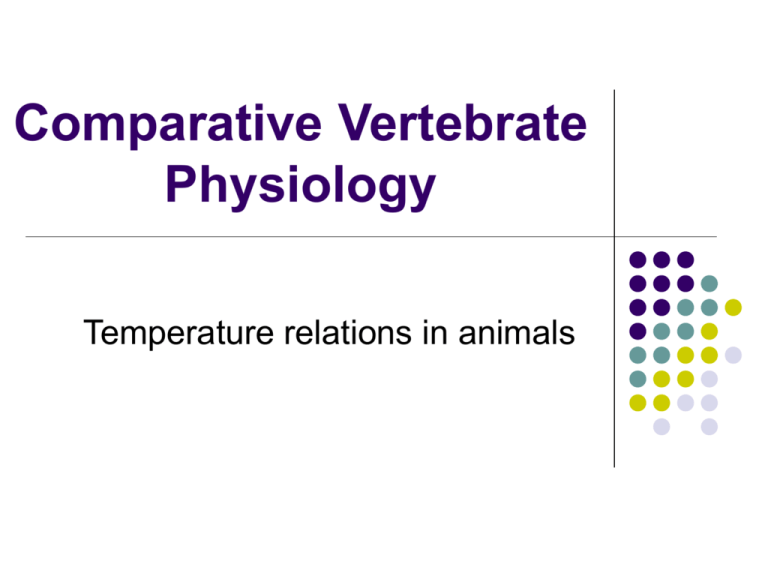
Comparative Vertebrate Physiology Temperature relations in animals Temperature variations Aquatic extremes -2°C - +40°C Terrestrial extremes -65°C - +70 °C Ectotherms in cold climates Freezing is lethal Strategies Freeze tolerant animals - supercooling Ca++ salts, phospholipids restrict ice formation to ECF Intracellular solutes (glycerol) restricting water movement Freeze avoidance: depress the osmotic freezing point Antifreeze proteins (sugars and glycerol) disrupt ice formation Ectotherms in hot climates Critical lethal maximum Aquatic Definition (50% mortality) Fish Salamanders 35 29-35.6 Anurans Alligators Turtles 36-41 38 41 Lizards Terrestrial Snakes 40.1-46.9 40.4-41.6 Problem with hot climate Critical lethal maximum Protein denaturing Decrease in hemoglobin O2 affinity Ectotherm adaptations e.g.marine iguana Bradycardia Peripheral vasoconstriction Ectothermy Costs Cold unless environment permits Short duration of activity Limited body size Benefits Niche exploitation More energy for growth and reproduction Require less water Heterotherms Terrestrial environment (e.g. Indian python) Heterotherms Aquatic environment: must produce metabolic heat Fishes (rete mirabile) Ectotherm Heterotherm Heterotherms Blue fin tuna Endotherms Thermal neutral zone Endothermy in cold climates Strategies 1. Decrease rate of heat loss Grow larger Change shape Reduce thermal conductance (huddling, fat, migration) Western pygmy possum Endothermy in cold climates • Reduce thermal conductance (countercurrent heat exchange, peripheral vasoconstriction) Core 37°C 32°C 25°C 22°C artery vein 15°C 12°C 10°C 7°C 5°C Appendages Terrestrial Aquatic Endothermy in cold climates Strategies 2. Increasing heat production shivering Endothermy in cold climates Strategies 3. Abandoning homeothermy Torpor Hibernation Endothermy in hot climates Strategies Gular fluttering (birds) Sweating (mammals) Panting (mammals) (evaporative cooling) Gular Endothermy Costs High rate of food and water consumption High rate of respiration (water loss) Small amount of energy for growth and reproduction Benefits Active throughout the day and night Large body size
